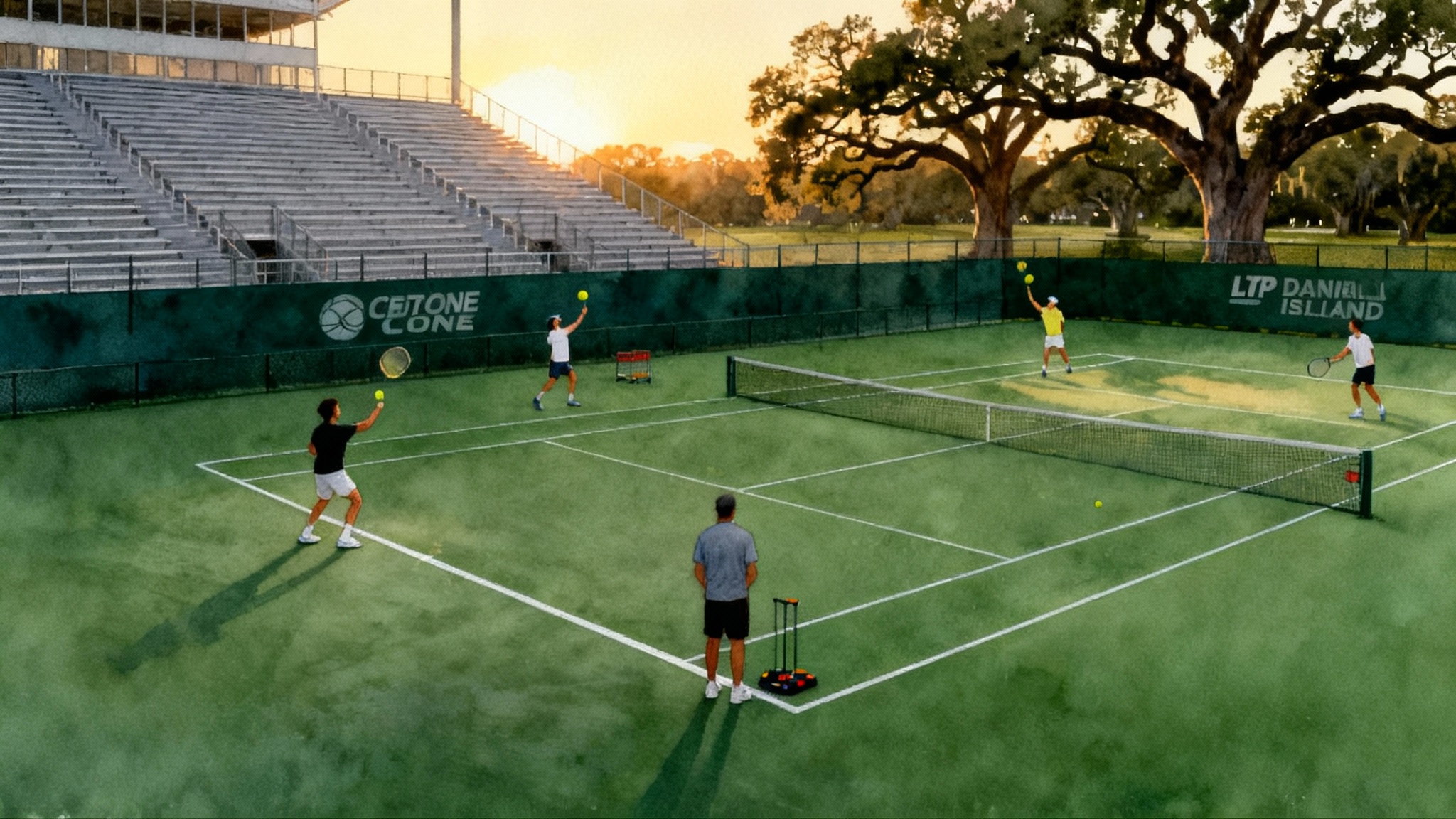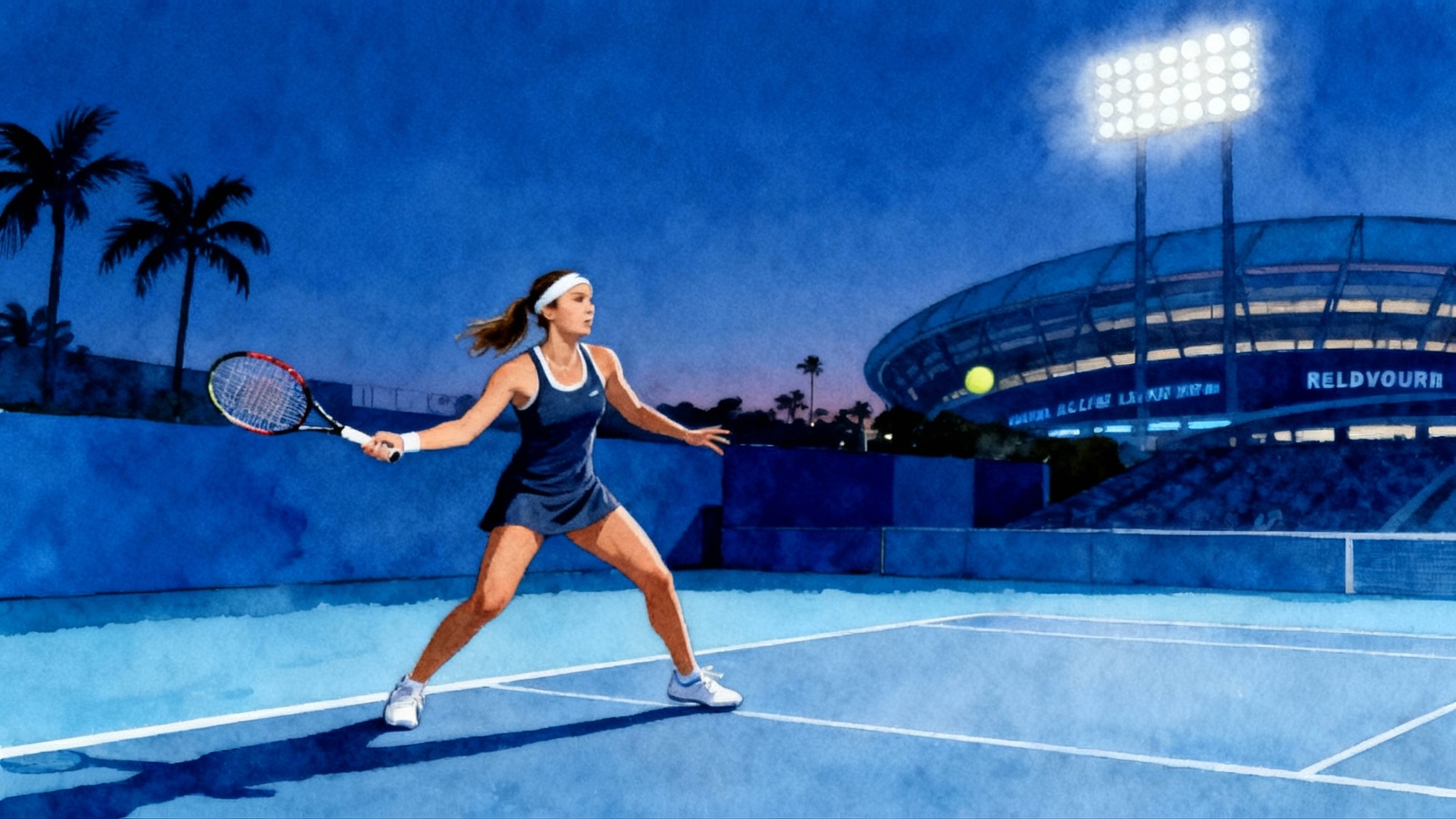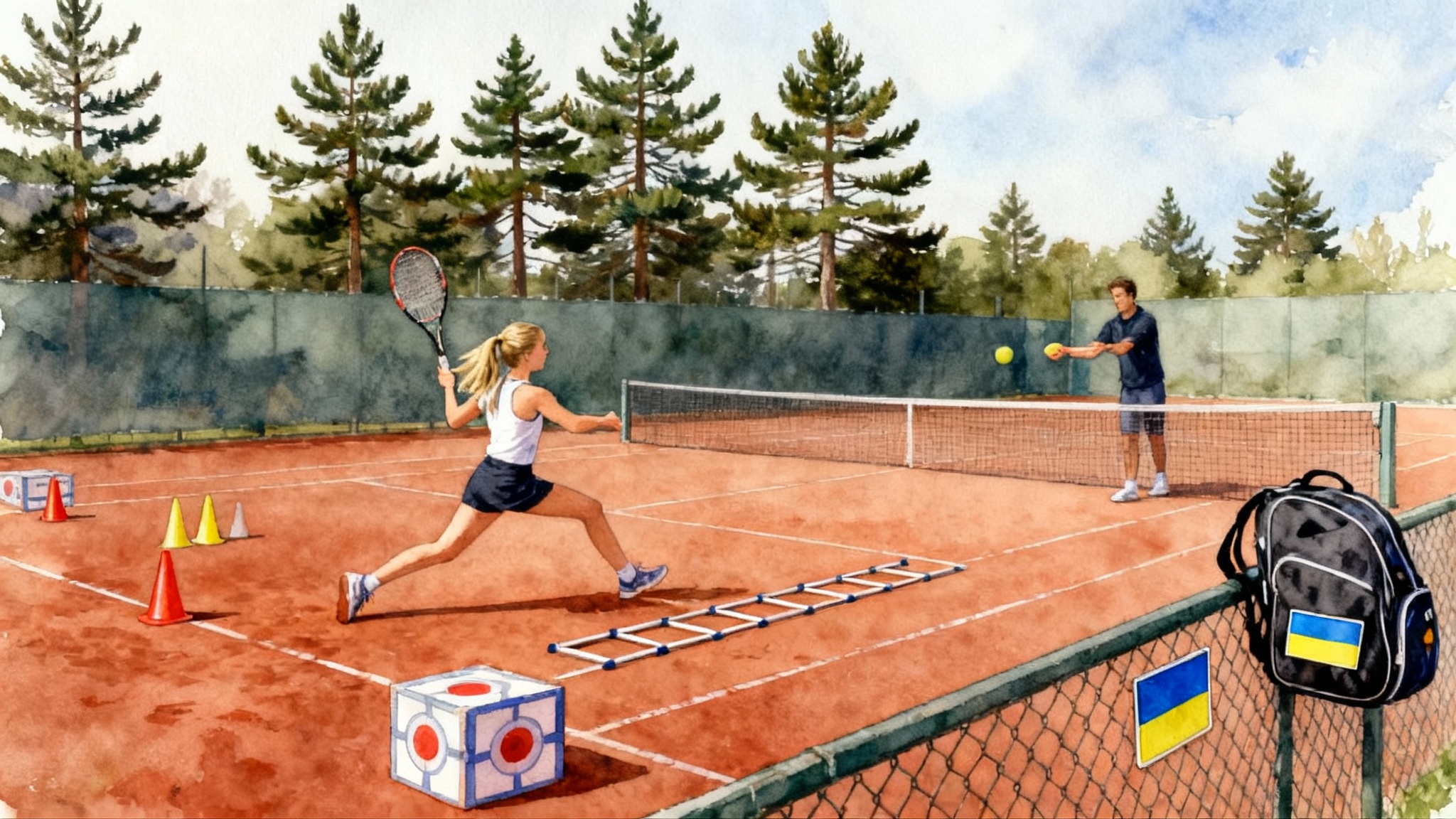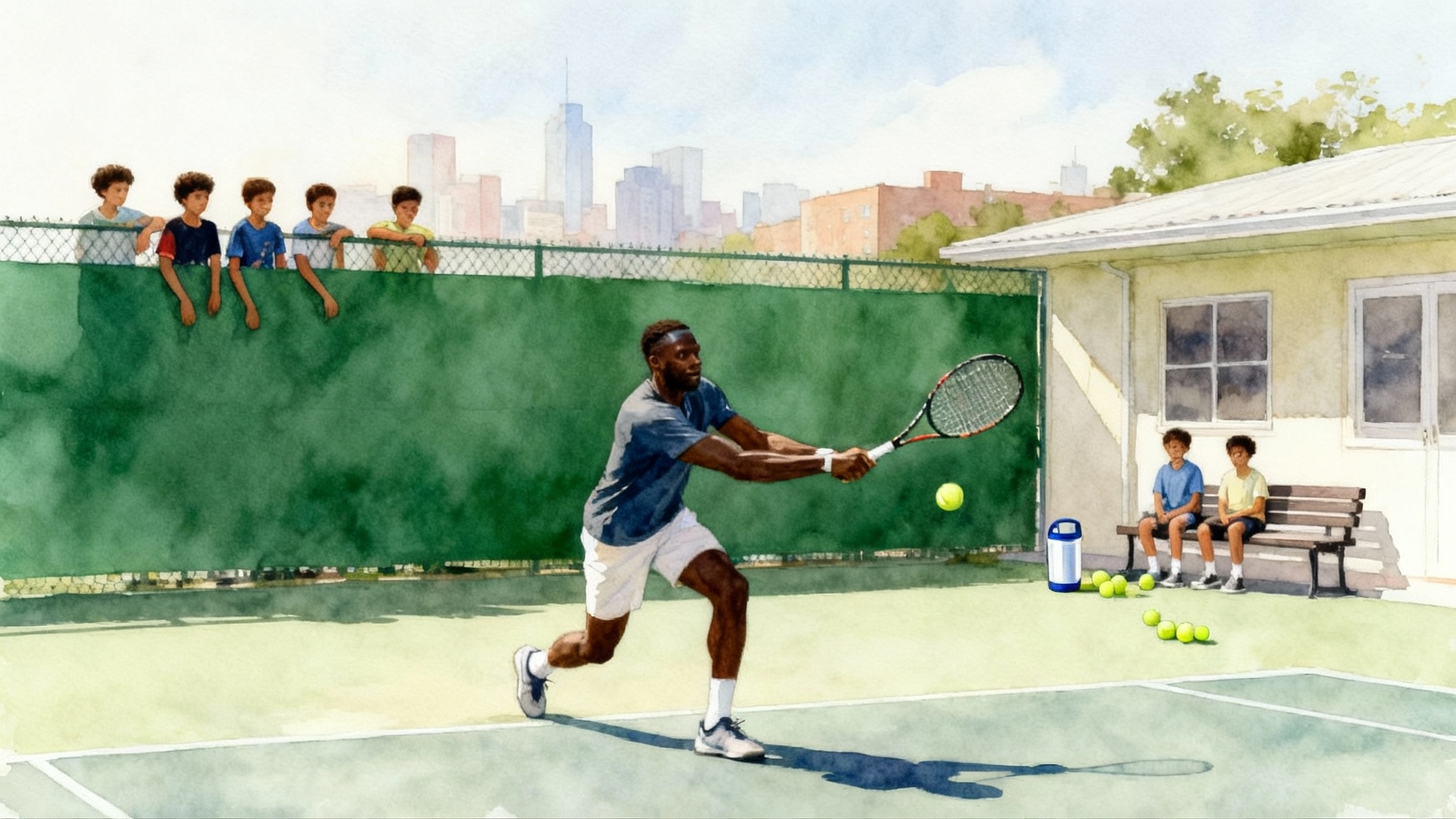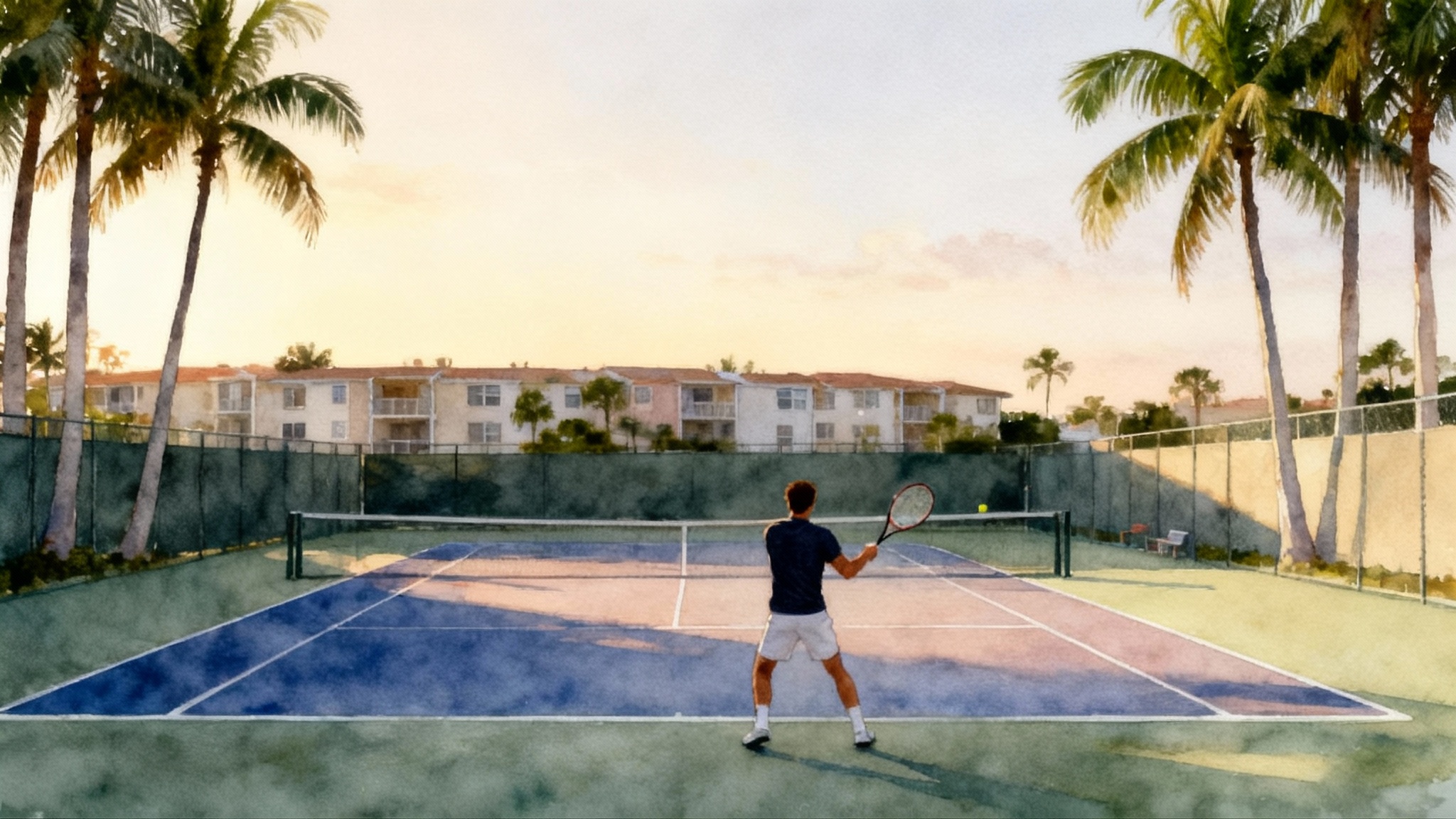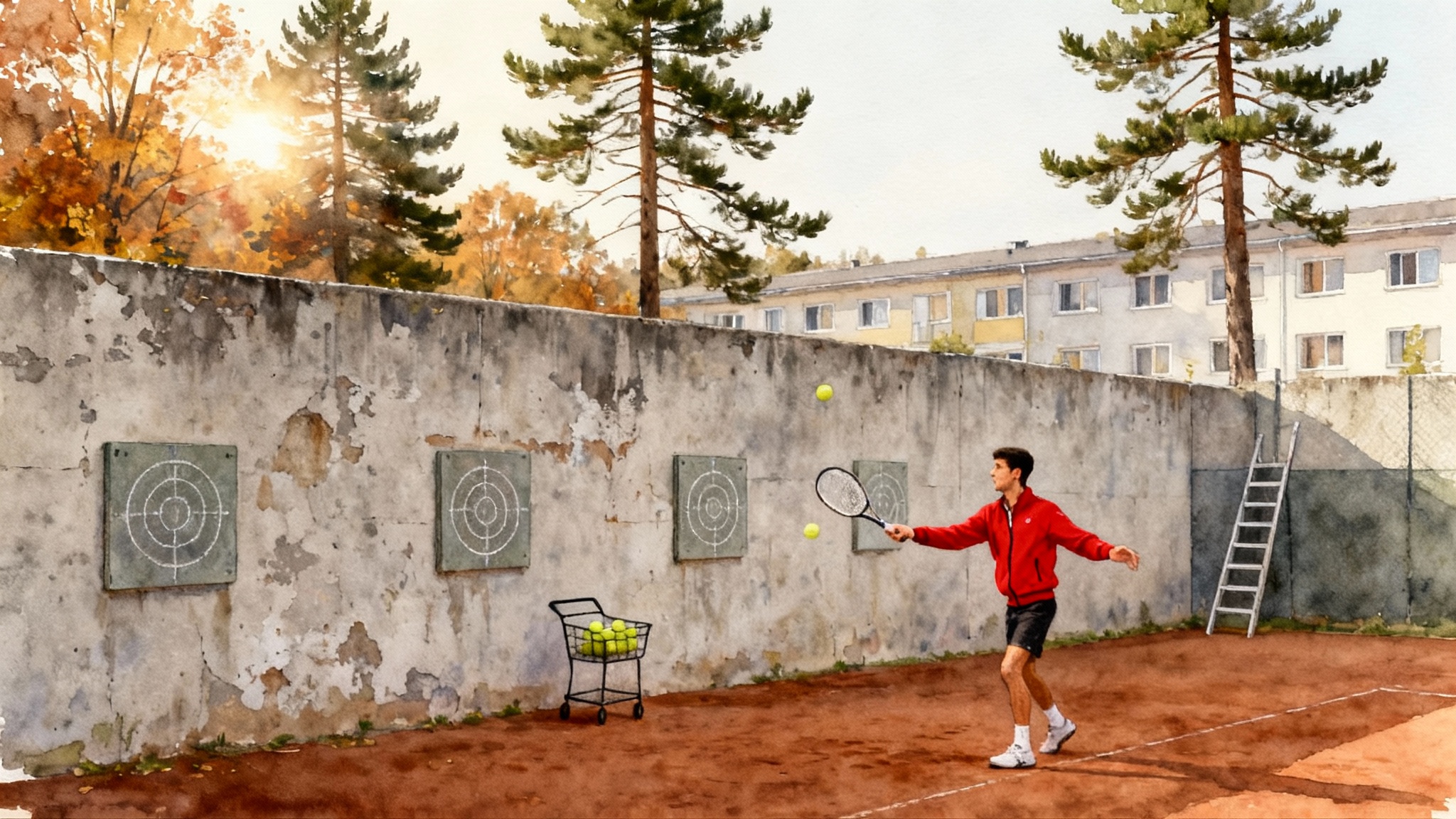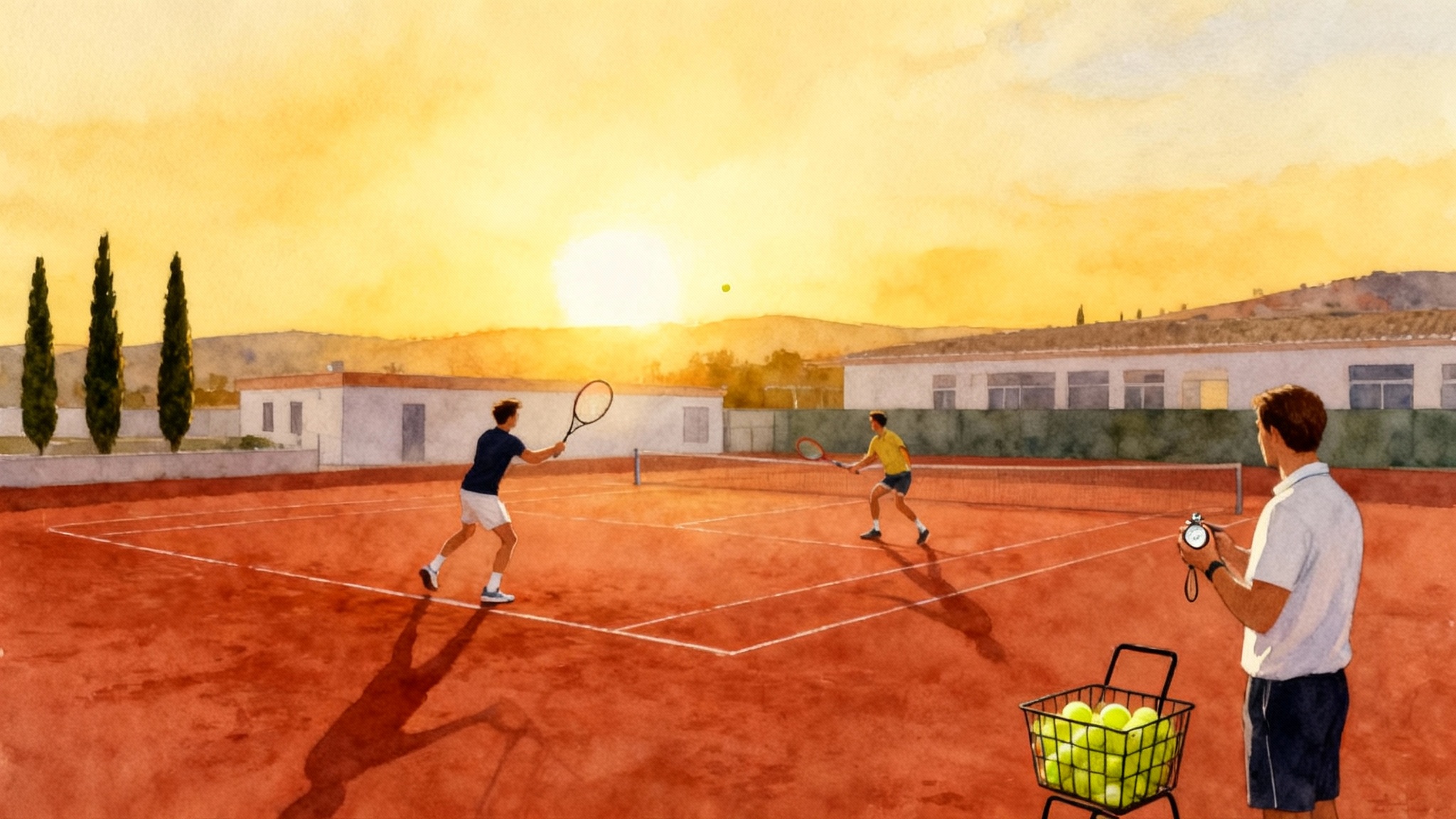Dunblane to Barcelona: How Sánchez-Casal Shaped Murray
At fifteen, Andy Murray left Scotland for the Sánchez-Casal Academy in Barcelona. Inside a school-and-tennis routine heavy on clay volume and multi-surface reps, his point construction and backhand took shape. Here is the blueprint for families.
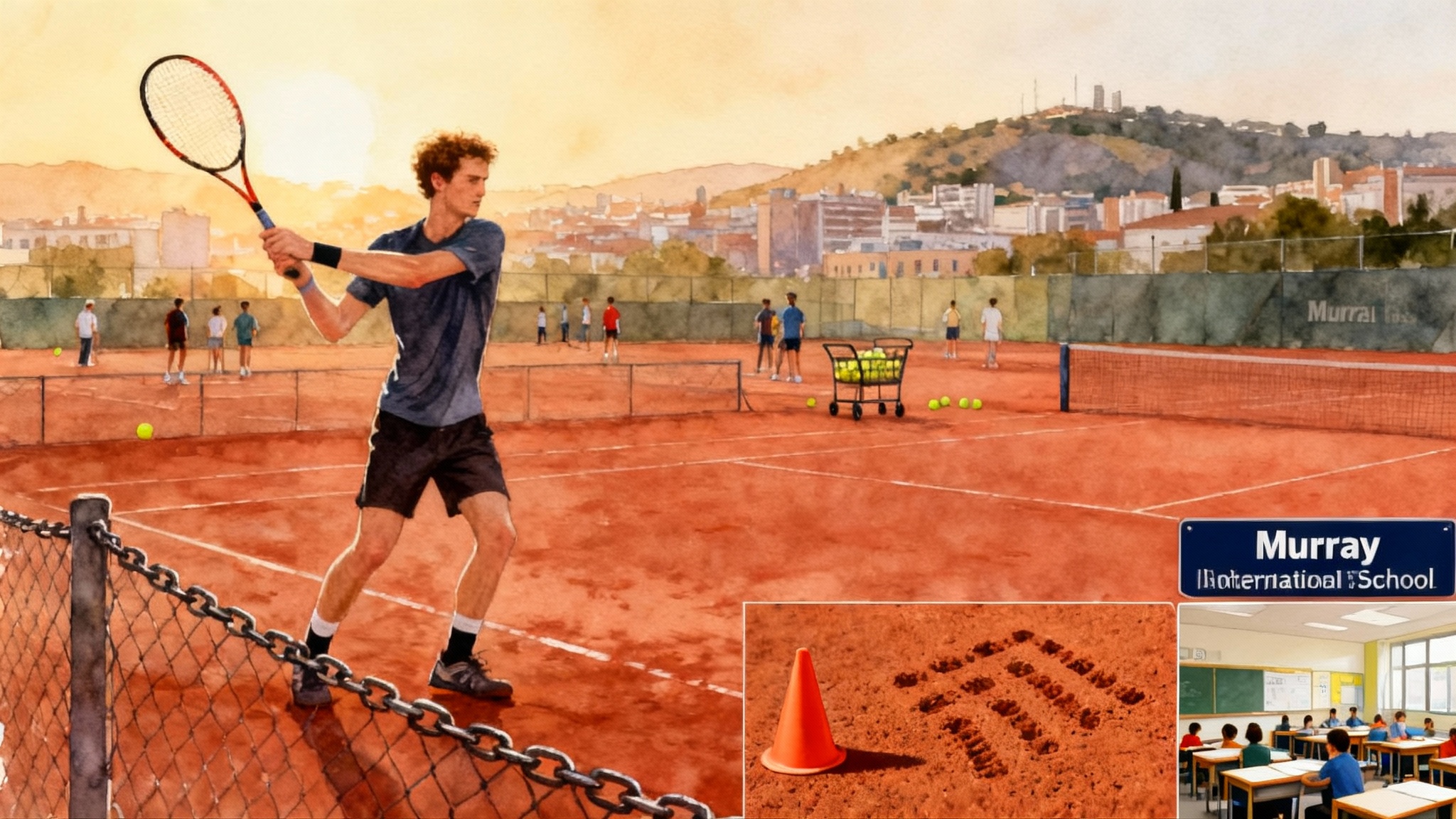
A teenager, a big decision, and a different tennis language
Andy Murray grew up in Dunblane on indoor hard courts and quick British surfaces. At fifteen he moved to Barcelona to train at the Sánchez-Casal Academy, a place that spoke a different tennis language. The vocabulary was patience, height, shape, footwork, volume. The accent was Spanish, but the message was universal. Learn to build points. Learn to problem solve. Learn to repeat quality for hours, then do it under pressure.
Parents often ask when a teenager should consider relocating for tennis, and what a world-class academy actually changes. Murray’s two formative years at Sánchez-Casal offer unusually clear answers. They show how a specific environment can hardwire an all-court game without sacrificing academics or burning out a young athlete.
The Sánchez-Casal method in the early 2000s
Sánchez-Casal was co-founded by Emilio Sánchez Vicario and Sergio Casal. The academy’s reputation rested on a clear training grammar. Start on clay to force point construction and balance. Teach topspin and height first, pace second. Put footwork on repeat so that stroke mechanics have stable ground. Then blend those patterns onto hard courts and, when available, grass.
Murray entered that system with a sharp tennis brain and a developing body. Under head coach José Manuel "Pato" Álvarez and within a culture shaped by Emilio Sánchez, he trained like a middle-distance runner who is also learning chess. Sessions emphasized patterns over one-shot highlights. He learned how to change direction safely, when to add height, when to flatten the ball, and how to disguise his intentions. That is the all-court DNA spectators later recognized on the biggest stages. For context on similar academy ecosystems, see how Pilic Academy shaped Djokovic and how JC Ferrero Equelite forged Alcaraz.
Clay as teacher, not destination
Clay is not just a surface. It is a metronome. The academy used heavy clay-court volume to regulate tempo and decision making. On clay, rushed choices are punished by length and spin. That forces a player to learn cause and effect.
Typical day structures favored repetitions that were long enough to be metabolic work and precise enough to be technical work. Examples:
- Crosscourt forehand to crosscourt backhand for twenty-ball minimums, then change direction only if the previous ball had enough height and depth.
- Short-ball attacks that required a deep approach shot, not a flat blast, followed by a first-volley target deeper than the service line.
- Defensive lobs with a mandatory recovery sprint through the center hash to build the habit of resetting shape.
In that environment, Murray’s backhand became a tour-class instrument. The shot was not trained as a single swing. It was trained as a family of solutions: neutral crosscourt with shape, down-the-line change that stayed low, defensive slice that bought time, and the surprise two-hander driven through the middle to jam an opponent. Clay gave him the repetitions to wire those options together.
Multi-surface reps that travel
One reason to choose a large academy is simple access to different courts. Sánchez-Casal had clay and hard courts available in volume. Coaches insisted on translating clay patterns to faster bounces. That translation mattered. Spanish-style training can stall if it never leaves red dirt. Murray’s weeks mixed surfaces. The sequence typically looked like this:
- Early week on clay to ingrain height, depth, and balance.
- Midweek on hard to compress time and test decision speed.
- Later week match plays that moved between surfaces so that patterns were not tied to the bounce.
The effect was visible when Murray first exploded on hard courts. He understood how to absorb pace and then redirect, a skill learned by receiving heavy topspin all day and learning to turn defense into neutral, then into attack. His return of serve, celebrated later as one of the best in the world, grew from that same habit: read early, set early, take away time.
Academics without a step back
Relocation fails if school becomes an afterthought. Murray’s schedule integrated classes through Schiller International School in Barcelona. Morning or mid-day lessons were not optional blocks. They were part of the routine, with staff coordinating training loads around exams and essays. The practical lesson for families is that an academy should prove the school fit with specifics. Ask for timetables, classroom size, subject offerings, and how teachers communicate with coaches about deadlines and recovery. A good setup looks like what Murray had: predictable hours, real coursework, and adults who treat tennis and school as complementary, not competing arenas. For another case study of school-and-tennis done well, see how Evert Tennis Academy forged Keys.
A training day that built endurance and clarity
A representative day during that period looked like this:
- Warm-up and mobility: 30 minutes focused on hips and ankles, with light skipping and band work.
- Technical block on clay: 90 minutes. One theme, such as backhand redirection, applied across several drills. Outcome measures were height over the net tape, depth zones, and change-of-direction quality.
- School block: 2 to 3 hours of classes or study in small groups.
- Lunch and recovery: 60 minutes. Coaches monitored hydration and carbohydrates. Simple habits were tracked, such as stretch checklists and logs.
- Match-play and serve plus one: 90 minutes on hard courts. Serve targets paired with first-strike patterns, then defensive escape patterns if the serve location missed.
- Strength and movement: 45 minutes. Emphasis on eccentric leg strength, core stability, and a few short sprints to prime the nervous system for the next day.
Because the volume was high, coaches varied intensity within sessions. Many sets ended by design while the player felt successful, not burned out. That did not make the work easy. It made the work repeatable, which is how habits become reliable under stress.
The friend across the net who became a coach
Peer quality is an underrated lever in academy selection. At Sánchez-Casal, Murray crossed paths with Dani Vallverdú, who became a close friend and, years later, a member of his professional coaching team. Their early relationship mattered. Two driven teenagers with aligned goals push each other without adult lectures. They co-created standards. If one cut a corner in a footwork ladder, the other noticed. If one turned a defensive point with a brave down-the-line backhand, the other had to learn the counter. Parents should look for that dynamic. It is more powerful than any motivational speech.
The backhand, explained like a coach would
Murray’s backhand is often praised for its consistency. The more useful observation is that it has levers that work together.
- Contact point: slightly earlier than many peers, which helps redirect pace down the line without over-rotating.
- Left-hand lead: his non-dominant hand drives through the ball, which keeps the string bed stable and takes the load off the right wrist.
Clay repetition honed those details, but the academy added problem solving. In patterns, he learned to disguise the down-the-line switch by keeping the same preparation as the crosscourt. He learned to float a slice when out of position and to resist the bad bargain of a rushed winner from a neutral ball. When that judgment met his return of serve skills, an all-court identity formed. He could win ugly, win long, or win with short attacking bursts. The common thread was choice quality.
The 2017 return and a name on the fence
Years after leaving Barcelona, Murray returned to the academy, where a court bears his name. The symbolism matters less than the loop it closes. The place where he learned to turn defense into offense publicly acknowledged that journey. For young players, ceremonies are not the point. The point is that foundations show up again and again in a career, and it is worth seeing where those foundations were poured.
When should a teenager relocate
Relocation is not a badge. It is a tool. Families can use Murray’s path as a checklist for timing.
Relocate when at least three of these are true:
- Local peers no longer stretch your player in daily practice. The best player wins too easily or cannot find variety.
- Tournament results plateau for six to twelve months even as fitness and technique improve. That suggests a tactical ceiling, not just execution issues.
- The player genuinely wants more tennis, not simply better results. Intrinsic motivation matters because academy life loads the day with repetition.
- A viable school solution exists that preserves long-term options. College, vocational routes, and professional paths should all stay open.
- The family can sustain the financial and emotional costs of living away from home. That includes travel, housing, and regular communication rhythms.
Delay relocation when the bottleneck is still technical basics or when the player has not yet shown they can manage a full school day alongside two training blocks. Technique can be built locally. The academy is for building robustness and decision quality at higher speeds.
What to look for in an academy
These are the non-negotiables that Sánchez-Casal supplied and that any serious program should demonstrate.
- Multi-surface access in the same week. Clay plus hard at minimum. Grass is a bonus if preparation matches the calendar.
- Integrated school with specific timetables, teachers who coordinate with coaches, and transparent progress checks.
- Daily training volume that is high but repeatable. Ask for example weekly schedules and how the staff individualizes loads for growth spurts, injuries, and exams.
- Pattern-based coaching. Look for sessions that string shots into sequences. If every drill ends after one or two balls, decision training is missing.
- Fitness built into tennis, not bolted on after. Movement patterns should show up inside ball striking rather than as isolated conditioning.
- A real peer ladder. Ask for the names and levels of likely training partners and how match plays are organized.
A sample week that builds patterns and resilience
Use this as a template to evaluate a program. It mirrors the logic of Murray’s formative stretch.
- Monday: Clay. Height and depth day. Long crosscourt exchanges with a rule that no change of direction occurs from behind the baseline unless the previous ball lands deep. Afternoon school. Light gym with eccentric focus on legs.
- Tuesday: Hard. Serve plus one. Targets into the ad court and deuce court paired with specific first-strike choices. After school, situational points that start with defensive feeds to rehearse escapes.
- Wednesday: Clay to hard. Morning on clay building drop shot disguise out of heavy crosscourt. Afternoon on hard translating the same pattern at higher speed. Short sprint work at day’s end.
- Thursday: Match play. Two out of three sets with a third set tie-break format to compress volume. Coaches track unforced errors by intention category rather than stroke label.
- Friday: Clay. Backhand day. Crosscourt height, then down-the-line change with recovery through the middle. Afternoon school and mobility session.
- Saturday: Mixed-surface practice sets, then doubles patterns to accelerate net instincts.
- Sunday: Off or light active recovery. Family call, school planning, and goal setting for the next microcycle.
Culture, not slogans
A good academy feels like a team. At Sánchez-Casal, coaches corrected with specifics, not with slogans. They used constraints. If a player missed long twice, the coach lowered the net tape for a drill to recalibrate height. If a player cut a corner on recovery steps, the next point started only after the full route through center was performed. Culture is the sum of those little reinforcements. When you visit a program, listen for verbs. Do coaches tell players what to do, then show them how, then recheck the result with a measurable? Or do they speak in generalities about intensity and passion? Choose the former.
How Spanish-style training scales to all surfaces
Some parents worry that clay volume will make a player defend forever. Murray’s career shows the opposite. Clay trained him to control the ball’s height, shape, and direction. When he moved to grass or a slick hard court, that control turned into time theft. He could shorten a rally with a precise change of direction without giving away court position. He could take a return early because his balance habits were built under heavy spin. Clay did not make him passive. It made him precise, and precision is portable. For another Spanish-rooted model that travels, study how JC Ferrero Equelite forged Alcaraz.
If your player aims for college tennis or the professional tour, that portability matters. Surfaces change from week to week, and even within events. Indoors on a slow hard court plays nothing like outdoors on a lively one. A training base that marries clay patience with hard-court speed handles those fluctuations without a dip in identity.
Pitfalls to avoid
- Chasing a famous name without a fit check. Big academies have layers. The founder’s philosophy matters, but your player will live with the assigned coach and peer group.
- Overloading the calendar. A new environment plus new volume plus homesickness can swamp a teenager. Build in a steady communication plan and early wins that have nothing to do with rankings.
- Ignoring recovery. Quality sleep, simple nutrition, and load monitoring are not extras. They are the way the next day’s session becomes useful instead of costly.
A quick due diligence checklist for parents
- Ask for a two-week trial. Use it to observe three training blocks, two school days, and one match day.
- Request data the staff already tracks. If the answer is only forehand and backhand errors, their lens is too narrow. Look for depth zones, first-serve locations by quadrant, and change-of-direction success rates.
- Meet the school coordinator and a lead coach together. Watch how they negotiate time when exams collide with travel.
- Meet likely practice partners. Ask them about a typical week. Players tell the truth without trying.
- Define success for the first six months. It might be improved balance on wide balls, a more reliable second serve, and maintaining grades. If the academy cannot translate those into a plan, keep looking.
Why this blueprint still holds
Tennis has changed since Murray left Barcelona, but the anatomy of a durable game has not. The modern tour rewards players who can adjust speeds and bounces without losing decision quality. A program that teaches point construction on clay, then exports those patterns to hard courts, still gives a young athlete the best chance to grow into a complete competitor.
The deeper lesson is that greatness usually begins with a system, not a spark. Murray’s talent mattered. His move at fifteen mattered more than most realize because it put that talent inside a method. Coaches who valued patterns over highlights. Reps that built a backhand family rather than a single shot. School that kept options alive. Friends who raised the bar quietly, every morning at warm-up.
Closing thoughts
Families do not need to copy every detail of Murray’s path to benefit from it. What they need is the clarity behind it. Choose an environment that teaches a language of patterns. Test that the school-and-tennis routine is real. Demand multi-surface access so skills travel. Then let repetition do its work. From Dunblane to Barcelona, the through line was simple and strong. Build a game that answers more questions than it asks, and you can play on any court, against anyone, at any stage of a career.
